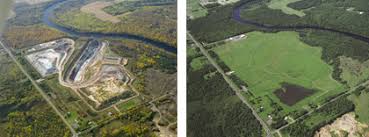Elections have consequences: What can Minnesotans expect on copper-nickel mining?
Last week, Minnesota Democrats won the Governor’s mansion, the House of Representatives, and the State Senate, giving them unified control of the legislature for at least the next two years.
These DFL victories may or may not have implications for proposed copper-nickel mining projects in the state, including the proposed Tamarack, Polymet, and Twin Metals mines.
“Prove it First” legislation
The most significant legislation that could affect these mining projects is a bill called “Prove it First.”
This legislation would prohibit state agencies from permitting a copper-nickel mine in the state unless it can be shown that at least one such mine has operated in the United States for ten years and has been closed for ten years without causing pollution.
According to the Senate DFL website, this legislation has garnered the support of 64 representatives and senators since the legislation was first introduced in 2021.
Has any mine “proven it?”
Mining supporters contend that the Flambeau Mine, which mined copper and gold in Northern Wisconsin demonstrated that mining operations can be operated and reclaimed in an environmentally responsible manner.
According to the website for the Wisconsin Department of Natural Resources (DNR), mining at Flambeau began in 1991 and the site was reclaimed by late 1998.
In accordance with the reclamation plan, stockpiled mining materials that were removed during the mining process were put back into the mine pit. High sulfur waste rock, which can cause acid rock drainage if not properly managed, was blended with limestone to neutralize the acid.
This chemical reaction is essentially the same process of taking a Tums to reduce acid reflux.
After the waste rock was neutralized and placed back in the mine pit, the waste rocks were overlain with rocks and soil that had been removed from the site. The site was leveled and topsoil was reapplied to the site and revegetation and wetland restoration efforts began.
The reclaimed mine site is now used for light recreation and wildlife habitat. The photographs below show the footprint of the mine during operation, and after reclamation.

Proponents of the Prove it First legislation will argue that Flambeau does not satisfy the criteria in “Prove it First” because the mine did not operate for ten years.
This is true. According to the DNR website:
Construction at Flambeau began in the summer of 1991. Site preparation, facility construction and mine development continued for about two years and ore shipments from the site began in 1993 and continued for more than four years. Backfilling of the pit took about 1.5 years and reclamation activities at the site were substantially completed by the end of 1999.
Mining proponents argue that whether a mine was in operation for ten years is less important than determining whether the reclamation was successful at protecting the environment. Flambeau has been a reclaimed mine site for more than 20 years.
The most recent groundwater monitoring assessment from the Wisconsin DNR suggests that due to ample availability of limestone and limited oxygen availability oxygen, there has been little to no input of oxidation products to the system over almost 20 years of saturation and the system is generally stable.
If protecting the environment is our primary goal when developing mineral resources, the Flambeau mine should be counted as evidence that it can be done responsibly.
What’s at stake?
Many Minnesotans may not realize that our state has some of the largest undeveloped deposits of copper and nickel in the world, and Minnesota has the largest deposits of cobalt, a key ingredient in electric vehicle batteries in the country.
Developing these mineral resources would provide an enormous boost to our state’s economy, increasing Minnesota’s gross domestic product by $5.9 billion and supporting 14,850 new jobs in our state.
These new jobs would be especially welcome in Northeastern Minnesota, where communities of have been shrinking due to a lack of economic opportunities.
All eyes on Hauschild
The fate of “Prove it First” will likely rest on Senator-elect Grant Hauschild (DFL) of Hermantown, who narrowly defeated the Republican candidate Andrea Zupancich. This race gave the DFL a one-seat majority in the Senate, meaning Hauschild will have the deciding vote on this issue.
On the campaign trail, Hauschild “called for a ‘rigorous regulatory process’ for copper-nickel mining projects but opposes the federal ban Biden has proposed in the Rainy River watershed, which flows into the Boundary Waters Canoe Area Wilderness,” according to MinnPost.
Hauschild will likely be under pressure from urban DFLers to vote in favor of this bill. How he ultimately decides to vote on this issue will determine the future of copper-nickel mining in Minnesota for the foreseeable future.